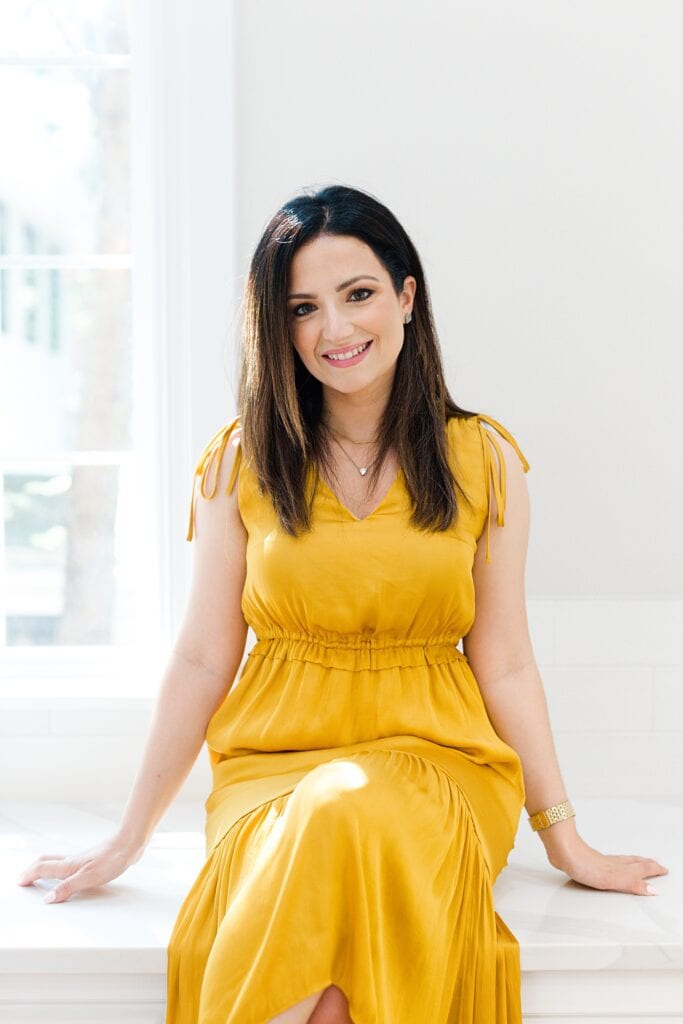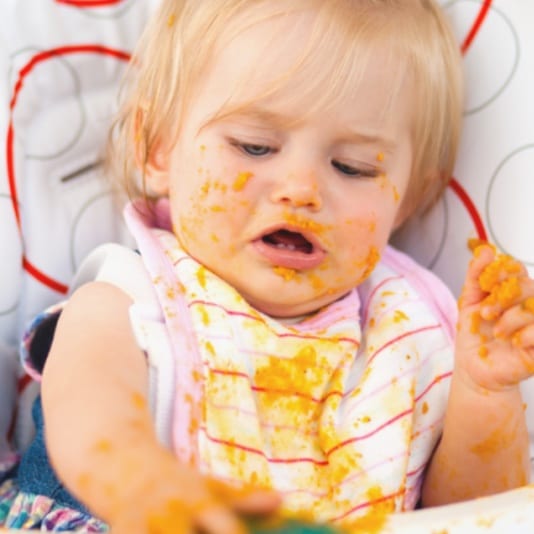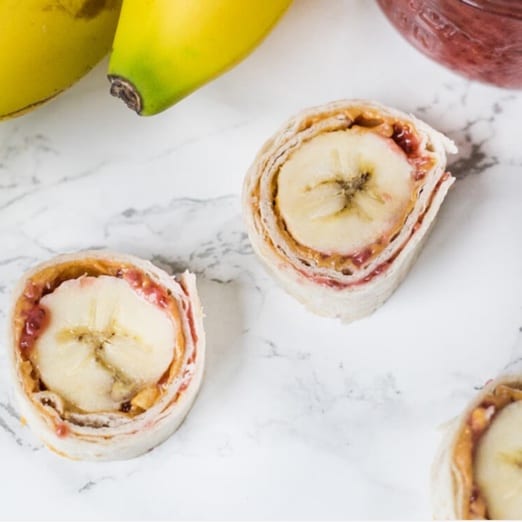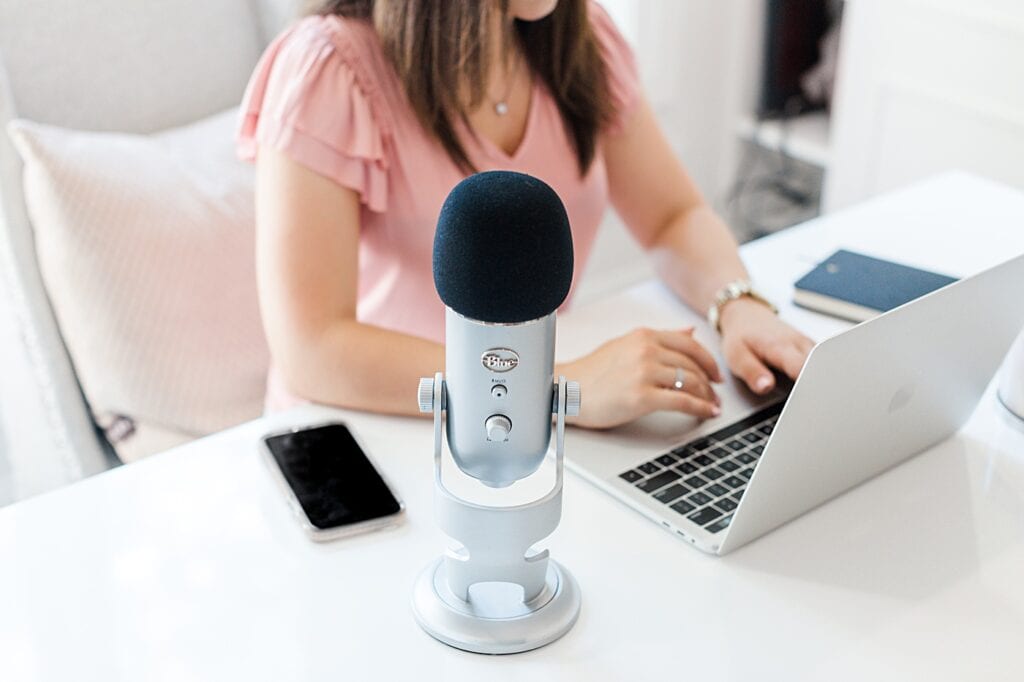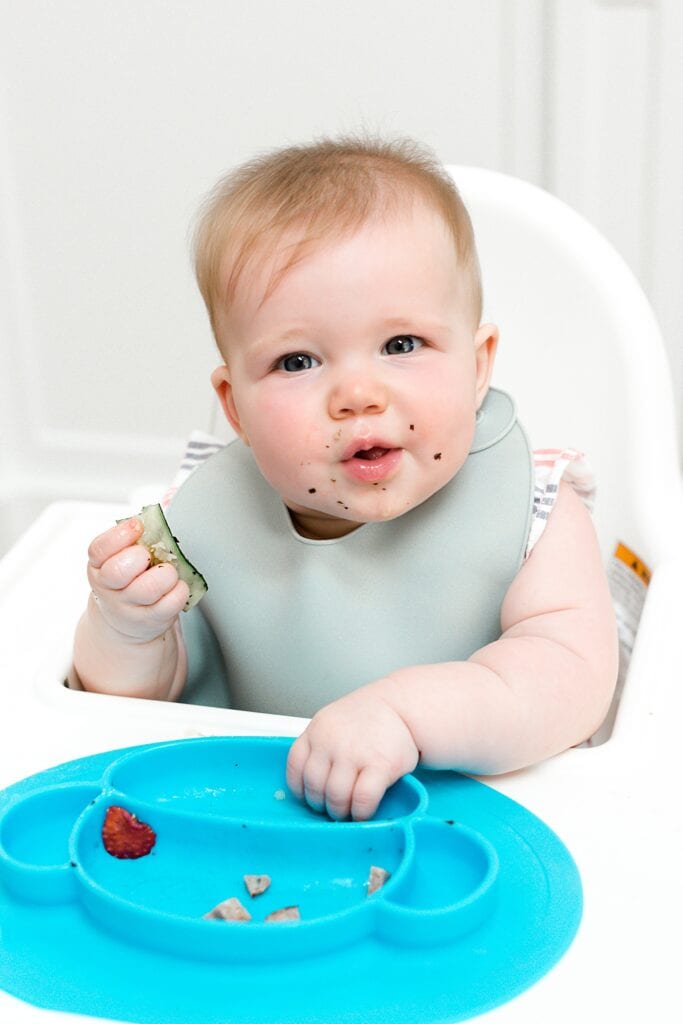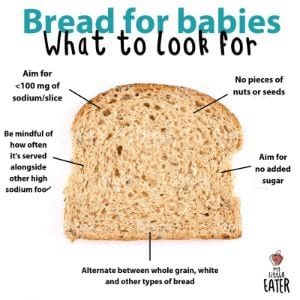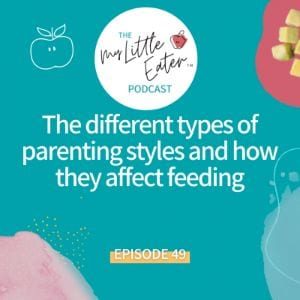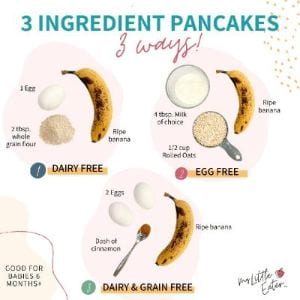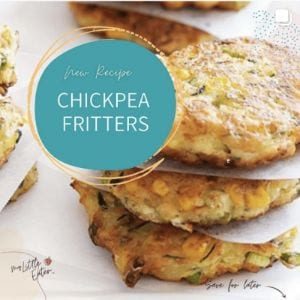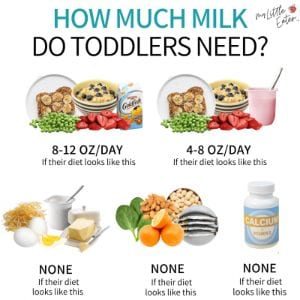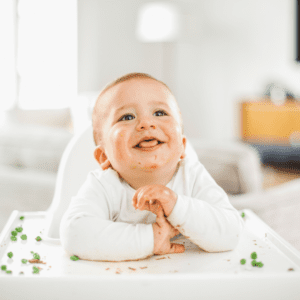
We generally know there are two main methods of starting solids, puree feeding and baby led weaning (BLW) (not familiar with each? Check out this blog post here for an explanation). And my entire life, after learning about each of these methods, and diving into the cultures that each method sits within, I have seen over and over a divide in people develop over the two philosophies of feeding.
Some people say that puree feeding is the way that babies are meant to be fed. That babies should be gradually introduced to textures and advanced little by little to ensure they learn how to eat safely. That you’d never throw a baby into the deep end with anything else, but yet we expect babies to go from never eating anything to eating every texture all at once. That purees are vital to ensuring babies get in a decent quantity of high iron foods, which are necessary for babies beginning at 6 months of age.
Other people say that BLW is the natural way to feed. That babies innately know how to feed themselves whole foods, and that eating skills will come after having had much practice with advanced textures right from the beginning. That BLW is an extension of the breastfeeding process, and is the only way to keep babies in control of the feeding process.
To be honest, there are so many pros to each method, but I say both can be great! It all depends on how you execute each method that will determine if you will get more of the pros…or the cons.
At this point in time with the research we have, we do generally see more benefits from BLW (when it’s done correctly). We see that BLW babies are more likely to be introduced to a greater variety of textures and flavours earlier, priming their palates, sharpening their oral motor skills, and giving them more tactile experiences with food, which helps reduce picky eating down the road. We see that family mealtimes become more of a norm, encouraging the social development of skills, and giving babies the opportunity to learn how to eat by watching their parents.
In fact, the benefits of BLW aren’t necessarily due to the fact that whole foods are introduced before purees per say (although it is a significant piece). It’s more to do with the variety of foods, the communal aspects of a family meal, and the fact that it’s a baby-led process. Allowing your baby to be in control of his or her own food choices and appetite, which BLW makes easy, is so important.
However, in many many cases, I don’t believe BLW is actually executed by families in a way that really makes use of the core concept. Many families offer the same, simple, ultra-soft food meal after meal (banana, avocado, sweet potato, rice rusks, yogurt, oatmeal etc.), but fail to really branch out and take advantage of the full gamut of foods out there, in a strategic way that actually allows babies to gain the true benefits of improved eating skills (after all, their baby is self-feeding still). And I see many babies are served food at mealtime in their highchair, and left to their own devices, while parents tend to the kitchen or are distracted by devices. After all…their baby is self-feeding still.
At the same time, even when done properly, there are still potential concerns with iron status and timely introduction of allergenic foods. For babies who don’t show the interest, or ability to self-feed right around 6 months of age, (which is when the World Health Organization (WHO) recommends to start introducing solid foods since breastfeeding alone no longer meets all a babies nutrient needs), sufficient intake of specific nutrients may be delayed until a BLW baby catches up with the skills required to take in enough food. For many babies, the ability to reach and grab food on their own may not happen until closer to 8 months of age, and in turn they aren’t able to consume a significant amount of high iron foods twice a day and be introduced to allergenic foods early, as is recommended. This problem isn’t seen with puree feeding since babies who don’t show the ability to self-feed yet can still willingly receive purees.
There’s no “one size fits all” approach
And so I ask…is there a perfect method?
It’s incredible to me to think that as a whole, we feel like a “one size fits all” approach will work in feeding. That there is a right or wrong way to feed, and that every baby should be ideally introduced one way over the other.
Are we really to say that a baby who isn’t into finger foods right away, shouldn’t get introduced to solids at all any other way in the meantime? Miss out on opportunities to get in high iron foods, and reduce allergy risk through introduction of allergenic foods?
Are we really to say that a baby who displays extreme interest and skills to eat a piece of food off their parents plate, should be denied that independence for another few months? They should never experience the joy of playing with food and exploring the textures in their hands and mouth (despite their eagerness), for another few months?
Are we really to say that parents who do the puree approach, can’t adopt so many of the wonderful philosophies and habits of BLW, and in turn, these positive outcomes as well? What if family meals were possible with puree feeding if parents were more deliberate about slowing down and eating alongside feeding their baby? What if parents who puree fed, were trained to feed in a responsive manner, to pay close attention to their baby’s cues, and truly let their baby decide if and how much to eat. What if parents who puree fed were trained to offer a real variety in flavours and textures, progress their baby along in textures as soon as they were ready, and encouraged independence in eating in whatever form their baby was indicating they were ready for?
I believe it 100% can be accomplished.
What I say is, let’s really take into account how incredibly individual each baby is. If we’re truly feeding responsively, we’ll see that some babies want to start with purees and ease into solid foods, while others are totally ready for finger foods and do great with them right from the start. Some babies get it in the first few meals…others take a couple months. If we’re too rigid in our agenda to go one route over the other, we miss the opportunity to truly feed in a baby led way, and truly give them the nutrition and the experience they deserve.
Going with this same thought of taking an individualized approach…we also need to take into consideration the parent’s experience. Because one of the most important things that contributes to successful and happy mealtimes, is the parent’s feelings of confidence, calm and joy. And it’s incredibly hard to feel those things if you’re feeling pressured to do it one “right” way over another. If you are feeling anxiety or needing time to build some confidence with purees first, but are told that finger foods must be introduced first, that your fear of gagging is something you need to get over, and that it’s better for your baby in so many ways for them to do baby led weaning – how do you think the mealtime experience is going to go?
On the flip slide, if you feel wrong about denying your baby’s curiosity around mouthing and grabbing appropriate handheld foods, and have to stop him every time he reaches for a food because you were told you have to slowly introduce them to stages of textures first – do you think you (or your baby) are going to enjoy mealtime as much?
Again, the idea of one approach being better than the other doesn’t fly in my books.
The most important takeaways from the research
Here’s what I do know. I know that we should follow what the core concepts are that research says is actually beneficial.
It says……
- That solid food feeding should begin by the age of 6 months, at which point breastmilk is unlikely to be able to meet nutrient needs.
- Introducing lumpy textures before 9 months of age helps prevent feeding difficulties and picky eating.
- Feeding your baby in a responsive manner keeps mealtimes pleasant and prevents over/under eating
- Encouraging independence during mealtime, and self-feeding as soon as possible, is recommended.
- Baby led weaning might be feasible for a majority of infants, but could lead to nutritional problems for infants who were relatively developmentally delayed. Some babies still aren’t self-feeding until 8 months of age.
- Encouraging babies to progress by offering new foods is important.
I also know what it’s like to be a parent, particularly a new parent that sometimes just needs to build confidence slowly. Some parents are just as ready as some babies to dive right in. Others need a bit of easing in. We’re just as individual as our babies are. We’re also just as important in this whole process.
What I have come to learn and believe is that, BOTH methods can be hard when they’re so rigidly adhered to. Both work great when they’re truly baby-led and keep your baby advancing in skills, AND when parent’s stress levels are low and they are having fun with feeding. This is what matters when it comes to whether or not you have a baby that has a reduced chance of developing picky eating. This is what matters when it comes to them having happy mealtimes and enjoying being at the table. This is what matters when it comes to having a baby that can eat what you eat, with little to no trouble.
And this my friends, is what I focus on with my Baby Led Feeding approach.
So with all that being said, let’s dive into the approach a bit more, shall we?
Baby Led Feeding to the rescue!
Think of it as the best of both worlds between purees and baby-led weaning!
Baby Led Feeding (BLF) is my signature method of starting solids, that takes the heart of the latest feeding research, and removes all the mom guilt.
It involves responsively feeding based on your baby’s cues, skills and sense of independence, all while gently nudging them to continually advance in textures.
Let the argument of “purees vs. finger foods” end here.
You start where your baby is ready and interested, and you focus on swiftly progressing them from there.
Forget the all-or-nothing approaches.
Want to start with Baby Led Weaning? Great! I’ll walk you through that.
Want to ease in with purees first? Also great! I’ll walk you through that.
Want to mix approaches? Guess what? Yah, you got it.
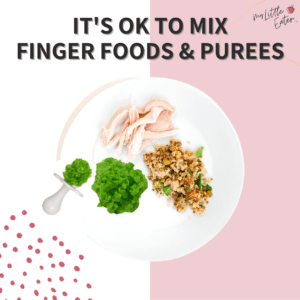
This is about building your confidence, and doing what your individual baby needs to help them eat a variety of nutritious and textured foods as independently as possible.
I’ve developed what I call “The Texture Timeline”, an exclusive tool to MLE, that will help you make sure your baby is advancing in textures and skills in a timely manner, that can be used especially by those parents looking for a progressive entrance into the world of starting solids. This will help avoid picky eating, and the swift advancement in textures will encourage a love of all foods! You start on that texture timeline wherever you and your baby show your ready. And you progress from there! Easy as that.
Because let’s be real, by around 9 -10 months of age, the way babies are fed should actually look the same, no matter which method you start with.
Did you hear that?
You’ll never know which baby started with which method, because the transition through baby led feeding means each baby gets what truly matters in feeding during this time period.
Then, babies will continue to hone in on their skills so that by 1 year, you’ll have a happy self-feeding and adventurous eater!
Guess what that means for you and baby?
- You can ease in slowly to more textured foods if you’re worried and kind of freaked out. See how your baby does, gain that confidence, and then keep moving forward!
- You’re making sure your baby gets tons of exposure to a variety of textures and flavours no matter what method you start with, which will 100% reduce their risk of being a picky eater down the road.
- You won’t have to stress about whether your baby is getting enough food and is healthy. Responsive feeding means you totally understand their hunger and fullness cues, and you can feel confident that you’re offering enough of the right types of foods for them to thrive!
- You’re making sure your baby leads the process, and becomes an independent eater as soon as they’re capable. They’ll have the skills to feed themselves (hand or utensil!) and will be eating all the same foods as you!
- You can relax and enjoy this whole amazing and fun process, ’cause let’s be honest, you’ll never get this time back with them!
Baby Led Feeding is essentially marked by three key principles
We start by recognizing, respecting and trusting our baby’s cues and signals
Babies give out cues and signals all the time, especially when feeding, basically as a way of communicating to us and telling us when they are hungry or full, when they’re frustrated because something is too challenging, or when they’re bored and need to be challenged with more advanced feeding methods or textures. They even give off cues to tell us if the pace of the meal is too fast or too slow, or if they’re enjoying a meal or not.
The ability to send these cues and signals to us is entirely natural and it makes feeding a two way relationship. Because you see, they know their bodies best (much better than we ever will).
At the end of the day, the BLF concept is about respecting our babies enough to treat them like whole human beings. We understand that if we were to be fed by someone else, we wouldn’t want to feel rushed, or forced to eat a certain amount. We’d want mealtimes to be as pleasant as possible, we’d want to eat food types that we’re capable of eating, and we’d want those who are eating with us to treat us in good company like anyone else at the table. Babies are the same way and deserve this respect.
You can see how baby led feeding means letting your baby take on an active role in the feeding process, no matter what method you start with. They are a key decision maker. Baby leads the feeding process.
We respond to our baby’s cues in an appropriate manner and give them the opportunities to keep on advancing
Now that we can recognize that our baby is giving out cues and signals to us, we need to do our part by responding appropriately. Sometimes this is easy for us and sometimes this can be hard. But if we trust and respect them, this means that we as parents may need to remove some expectations of how things will go in feeding and actively respond to their lead.
For example:
- You may want to feed your baby purees, but quickly find out your baby is looking to exert their independence and self feed from the beginning. Once you see these cues, you adjust your initial expectations and allow them to self feed.
- Or, you had a vision of only doing baby led weaning, only to see that your baby is not ready to eat finger foods on their own. You recognize that every baby is completely different and you need to go with what our baby is telling us is right for them at that time. Therefore, you respond by offering purees until they show they are ready to advance from there.
- Perhaps your baby has already indicated that they’re full during a meal, even though to you it doesn’t seem like they ate a lot. You listen to your baby’s cues and end mealtime regardless of whether it seemed like it was enough food to you or not.
- Maybe your baby is showing signs that they’re still hungry, even though you think they’ve already had enough to eat. You still decide you will not restrict your baby and keep offering them food until they show signs they are full.
This is us responding to our baby’s lead. In other words – parents have a very active and very important role in the feeding process too!
Gently nudging babies along The Texture Timeline™
In order for our babies to execute their role in guiding feeding sessions, we need to allow them to explore all kinds of textures. It’s crucial that we are continually providing opportunities for our baby to explore a variety of healthy food, in a variety of textures. So, perhaps this means serving purees alongside a couple finger foods during the first few meals, to see what your baby leans more towards. Then, once your baby has mastered a texture, continue to challenge them with something different, or more advanced options meal to meal! Perhaps this means refraining from continually offering ultra soft or comfortable textures, and committing to deliberately moving forward to expand food options to as many flavours and textures as possible.
That’s why I’ve developed my Texture Timeline™, so that you can make sure you’re walking your baby through a variety of textures and give them the opportunity to advance in feeding skills, regardless of whether you’re starting with purees or finger foods. This will naturally allow your baby to experience a wider variety of flavours and types of food, as well as practice self-feeding and independent eating skills – all which are very important for reducing your child’s risk for picky eating down the road.
As feeding guru Ellyn Satter says, “Go off what your baby can do – not what age they are, or what others expect!“
PS. This is exactly how you build feeding confidence!
In summary, whether you start with purees or dive right into baby-led weaning, let’s always just remember baby’s in control: they lead, we respond!
At My Little Eater, our mission is to offer you a feeding approach that isn’t one size fits all, is tailored to honouring you and your baby’s needs, all while giving you the support you need to make this journey memorable and fun! My Baby Led Feeding online course covers everything you need to know to help you start solids on your own terms and raise a truly adventurous eater. We’ve been working so hard behind the scenes to bring you an updated and even better version of the course , which will be released on February 24th, 2021! If you’re wanting to dig into the course before the launch, you can buy now and you’ll get access to all the new updates AND you’re even getting a better deal, because the price will go up slightly after the launch. There’s no better time then now! Follow @mylittleeater on Instagram for a full month of Baby Led Feeding myths, and tips, leading up to the launch!
